-
Heel Pain
-
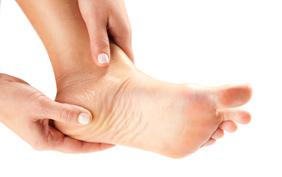
- Heel pain is a common symptom of excessive strain placed on the structures that form the heel.
-
-
Ankle Fractures
-
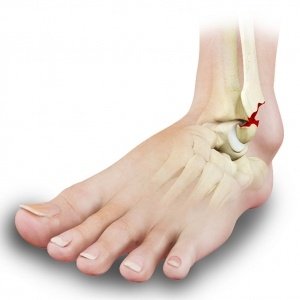
- Ankle injuries are very common in athletes and individuals performing physical work; often resulting in severe pain and impaired mobility. Pain after ankle injuries can either be from a torn ligament (ankle sprain) or broken bone (ankle fracture).
-
-
Achilles Tendinitis
-
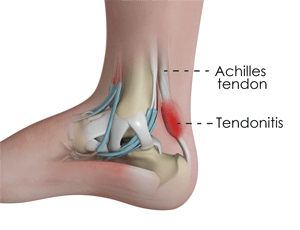
- The Achilles tendon is a tough band of fibrous tissue that runs down the back of your lower leg and connects your calf muscle to your heel bone. The tendon is used when you walk, climb, jump, run and stand on your tip toes.
-
-
Hammertoe
-
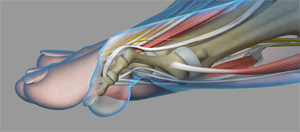
- A hammertoe is a deformity of a lesser toe (second through fifth toes), where the toe is bent upward at the toe’s middle joint, resembling a hammer. The bent portion may rub against the shoe causing pain, irritation and develop corns.
-
-
Bunion
-
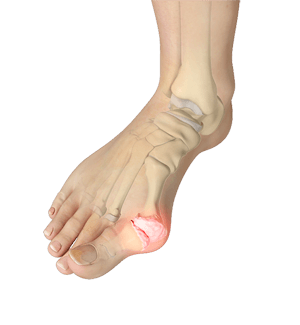
- A bunion is a bony protuberance that appears on the outer surface of the big toe when it angles toward the adjacent toe. It is an extra bone and a fluid-filled sac that grows at the base of the big toe.
-
-
Bunionette
-

- Bunionette also referred to as a tailor’s bunion is a bony lump that grows on the outside of the foot at the base of your little toe. The deformity got its name as q tailor’s bunion when tailors once sat with their legs crossed all day, with the outside edge of their feet rubbing on the ground.
-
-
Arch Pain
-
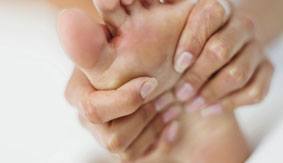
- Arch pain refers to pain or inflammation at the arch. Arch is the underside of your feet in between your heel and the ball of the foot. Arch pain may be caused due to various factors such as an injury on the foot or structural imbalance, or conditions such as plantar fasciitis.
-
-
Morton's Neuroma
-
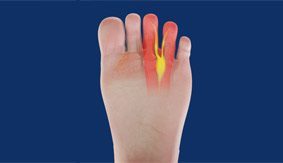
- Morton’s neuroma refers to a nerve injury that occurs between the toes, usually the third and fourth toes. This causes pain and thickening of the nerve tissue.
-
-
Foot & Ankle Arthritis
-
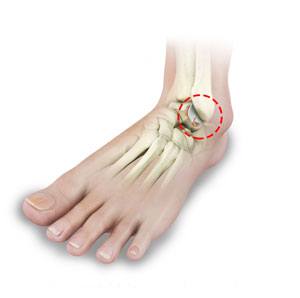
- Arthritis is the inflammation of joints as a result of degeneration of the smooth cartilage that lines the ends of bones in a joint. This degeneration of the cartilages leads to painful rubbing of the bones, swelling, and stiffness in the joints, resulting in restricted movements.
-
-
Ingrown Toenail
-
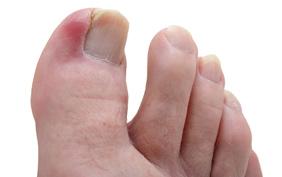
- An ingrown toenail is a common and painful condition of the toe. It occurs when the side or corner of the nail grows inwards and penetrates the skin of the toe. Pain is often accompanied by swelling and redness. The big toe is affected most often.
-
-
Metatarsalgia
-
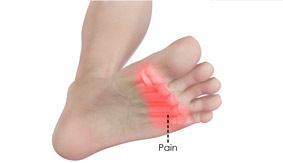
- Metatarsalgia is a condition in which pain and inflammation are caused due to overuse or injury to the ball of the foot - the area between the toes and the arch. This condition mainly affects the joints at the base of the five-toe bones.
-
-
Workplace Injuries
-
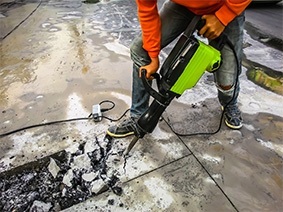
- Injuries at the workplace range from minor cuts or bruises which are non-fatal to injuries such as severe fractures or trauma that can be fatal. Injuries can occur due to slips, repetitive motion, hazards from machinery, falling from a height, burns, or any kind of violent act.
-
-
Heel Spurs
-
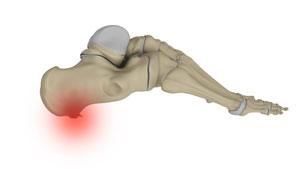
- The heel is made up of the calcaneus bone and supported by a network of muscles, tendons, ligaments and soft tissues, which together support the weight of the body and stress during movement.
-
-
Lisfranc (Midfoot) Injury
-
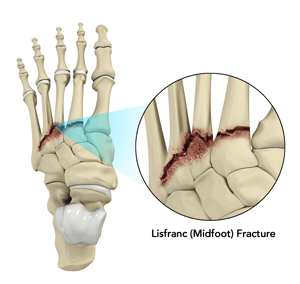
- The tarsometatarsal joint or Lisfranc joint is the region in the middle of the foot formed by the articulation of the tarsal bones (a cluster of seven bones) and metatarsal bones (a group of five long bones).
-
-
Ankle Rheumatoid Arthritis
-
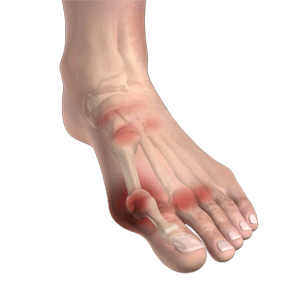
- Arthritis is inflammation in a joint as a result of cartilage degeneration causing joint pain, swelling, stiffness, and restricted movement. Arthritis of the foot and ankle joint can occur due to fractures, dislocation, inflammatory disease, or congenital deformity.
-
-
Cavus Foot Deformity
-
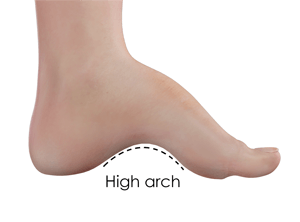
- Cavus foot also referred to as a high arch, is a condition in which the arch on the bottom of the foot that runs from the toes to the heel is arched more than normal. Because of this, excessive weight falls on the ball and heel of the foot when walking or standing, causing pain and instability.
-
-
Foot Rheumatoid Arthritis
-

- Arthritis is inflammation in the joint resulting from the degeneration of cartilage causing joint pain, swelling, and stiffness resulting in restricted movements. Arthritis of the foot and ankle joint can occur due to fractures, dislocation, inflammatory disease, or congenital deformity.
-
-
Midfoot Arthritis
-
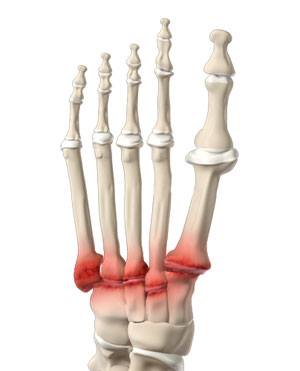
- Midfoot arthritis is pain and inflammation of the midfoot. It occurs due to damage of cartilage or tissues around the joints. The damage may occur due to injury, aging or autoimmunity. The foot bones are the phalanges, the metaphalanges, and the tarsal bones.
-
-
Hallux Rigiditis
-

- Hallux Rigiditis is a form of degenerative arthritis at the metatarsophalangeal or MTP joint where the base of your big toe attaches to the foot. Arthritis is the inflammation of joints as a result of degeneration of the smooth cartilage that lines the ends of bones in a joint.
-
-
Lesser Toe Deformities
-

- Lesser toe deformity is an abnormality in the anatomy of your toe that occurs as a result of imbalance between the intrinsic and extrinsic muscles.
-
-
Ankle Sprain
-
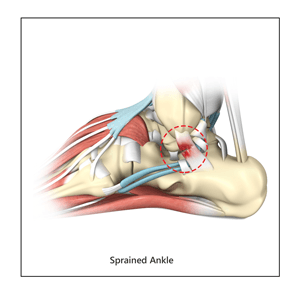
- A sprain is the stretching or tearing of ligaments. Ligaments connect adjacent bones and provide stability to a joint. An ankle sprain is a common injury that occurs when you suddenly fall or twist the ankle joint, or when you land your foot in an awkward position after a jump.
-
-
Achilles Tendon Rupture
-
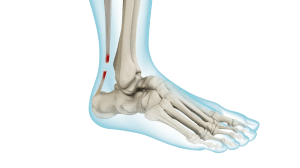
- The Achilles tendon is a strong fibrous cord present behind the ankle that connects the calf muscles to the heel bone. It is used when you walk, run and jump. The Achilles tendon ruptures most often in athletes participating in sports that involve running, pivoting and jumping.
-
-
Plantar Warts
-
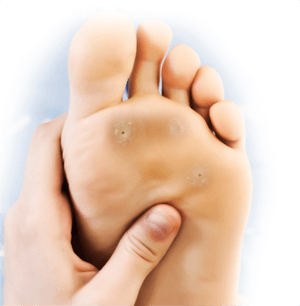
- Warts are harmless outgrowths on the skin caused by human papilloma virus (HPV) infection. They grow on all body parts including face, fingers, feet, legs, hands, knees, inside your mouth, and on the genital and rectal areas.
-
-
Plantar Fasciitis
-
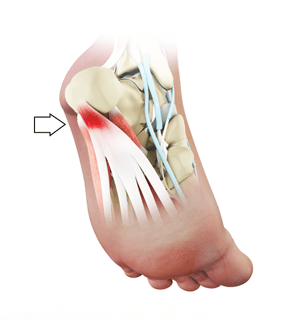
- Plantar fasciitis refers to the inflammation of the plantar fascia, a thick band of tissue that is present at the bottom of the foot. It runs from the heel bone to the toes and forms the arch of your foot.
-
-
Ankle Instability
-
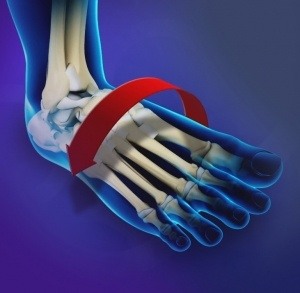
- The joints of the ankle are held in place and stabilized by strong bands of tissue called ligaments. Ankle instability is a chronic condition characterized by a recurrent slipping of the outer side of the ankle.
-
-
Nail Bed Injuries
-

- Nail bed injuries such as crush and avulsion injuries commonly occur when the nail bed gets compressed between the hard nail on top and the toe bone below it.
-
-
Flatfoot
-
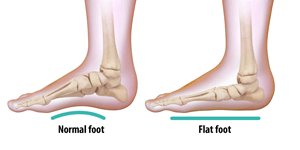
- Flatfoot, also known as “fallen arches” or Pes planus, is a deformity in children’s feet where the arch that runs along the sole of the foot collapses to the ground or is not formed at all. Flatfoot is normal in the first few years of life as the arch of the foot usually develops between the age of 3 and 5 years.
-
-
Diabetic Foot Conditions
-
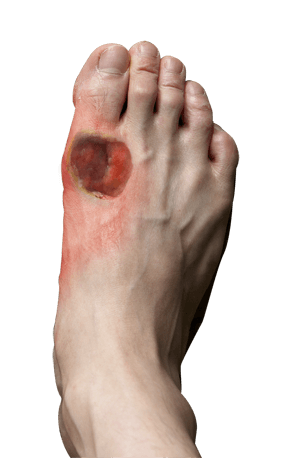
- Diabetes is a chronic condition that is characterized by high blood glucose (sugar) levels. Diabetic patients are at high risk for developing chronic wounds, especially in the feet. If left untreated, these wounds can cause serious problems that can lead to infections and eventually gangrene, which may require amputation.
-
-
Osteochondral Injuries of the Ankle
-
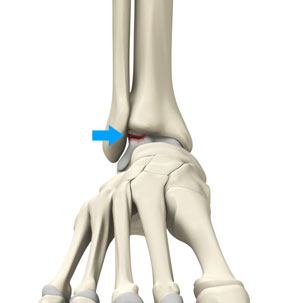
- The ankle joint is formed by the articulation of the end of the tibia and fibula (shinbones) with the talus (heel bone). Osteochondral injuries, also called osteochondritis dissecans, are injuries to the talus bone.
-
-
Turf Toe
-
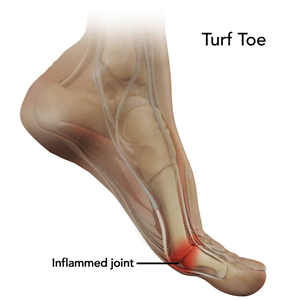
- Turf toe is an injury to the ligament at the base of the big toe. It is a painful condition that usually results from jamming the toe into the ground or excessive backward bending of the toe. As it is more common in athletes playing on artificial turf, especially those involved in field sports such as football, baseball, and soccer, it is known as turf toe.
-
-
Foot Fracture
-
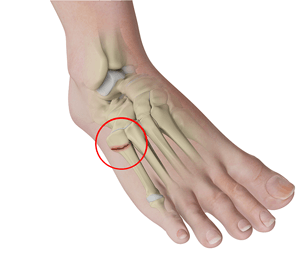
- Trauma and repeated stress can cause fractures in the foot. Extreme force is required to fracture the bones in the hindfoot. The most common type of foot fracture is a stress fracture that occurs when repeated activities produce small cracks in the bones.
-
-
Foot & Ankle Trauma
-
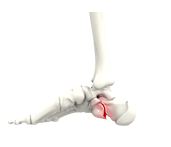
- Foot and ankle trauma refers to injuries that most commonly occur during sports, exercise or any other physical activity. Trauma may be a result of accidents, poor training practices or use of improper gear. Injuries may also be caused when an individual is not medically fit or because of insufficient warm-up and stretching exercises.
-
-
Ankle Ligament Injury
-
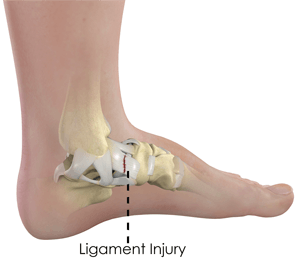
- An ankle ligament injury, also known as an ankle sprain, can be caused by a sudden twisting movement of the foot during any athletic event or during daily activities. When stretched beyond its limit, the ligament may partially or completely tear.
-
-
Achilles Tendon Bursitis
-
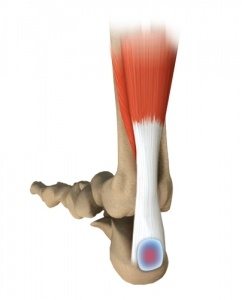
- Achilles tendon bursitis or retrocalcaneal bursitis is a condition that commonly occurs in athletes. It is a painful condition caused by the swelling of the bursa, a fluid-filled sac that is located at the back of the heel under the Achilles tendon.
-
-
Athlete's Foot
-
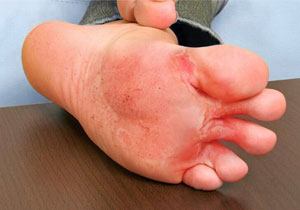
- Athlete's foot, also known as tinea pedis, is a fungal infection that forms on the skin of the foot. It is characterized by itchy, moist, white, scaly lesions between the toes that can spread to the sole of the foot.
-
-
Forefoot Pain
-
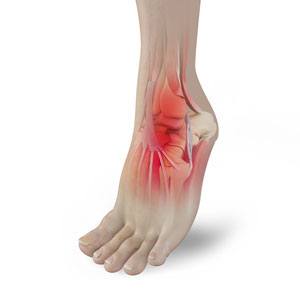
- Forefoot pain, also referred to as metatarsalgia, is a type of pain that occurs in the ball of the foot (along the ends of the metatarsal bones). Generally, forefoot pain is associated with aging. Individuals with metatarsalgia experience pain of varied intensities and discomfort and find it difficult to perform activities such as walking, running and playing.
-
-
Intoeing
-
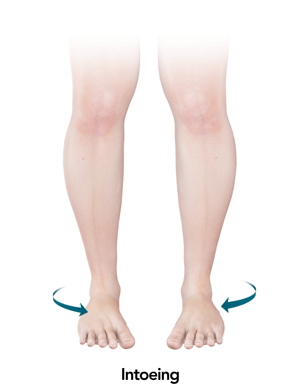
- Intoeing, also called “pigeon-toed”, is an abnormal condition characterized by the inward facing of the toe or foot instead of being straight. You may observe intoeing in your child at an early age when they start walking. Usually, intoeing corrects itself without any specific treatment as your child grows up to around 8 years of age.
-
-
Foot Drop
-
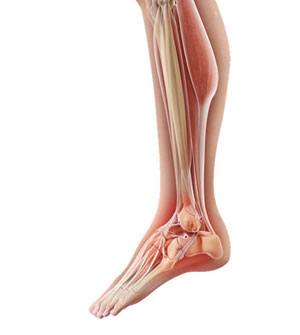
- Foot drop, also known as drop foot, is a sign of an underlying muscular, neurological or anatomical condition, where you are unable to lift the front part of your foot, which results in the dragging of the foot.
-
-
Claw Toe
-
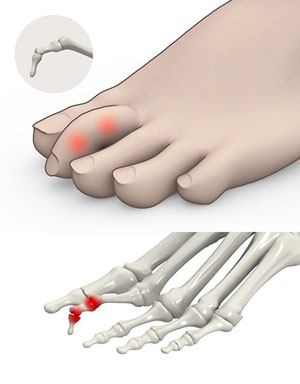
- Claw toe is a deformity where a toe bends and appears like a bird’s claw. The affected toe is bent upward from the joint at the ball of the foot, and downward at the joints in the middle and tip of the toe to curl under the foot.
-
-
Congenital Limb Deformities
-

- Congenital deformities of the lower limbs are developmental disorders that cause alterations in the shape and appearance of the legs. Several factors, including genetics, influence the fetal growth in the womb, and exposure to teratogenic drugs and chemicals can increase the risk of congenital deformities.
-
-
Toenail Conditions
-

- Nails are an extension of the top layer of the skin and are composed of a nail plate (top layer) and nail bed (skin below the nail plate). The nail matrix is the region where your toenail begins to grow. Nails are made of keratin (protein) and help to protect your fingers and toes from injury.
-
-
Ganglion & Soft Tissue Tumors
-

- Soft tissue tumors are lumps beneath the skin of your foot and ankle that occur due to the overgrowth of tissue (fat cells) within or between the muscles, tendons, nerves or blood vessels.
-
-
Congenital Deformity & Clubfoot
-

- Congenital deformities of the lower limbs are developmental disorders that are present at birth, causing alterations in the shape and appearance of the legs. Several factors such as genetics, teratogenic drugs, and chemicals can cause congenital deformities.
-
-
Ollier Disease
-

- Ollier disease, also known as enchondromatosis, is a disorder that affects the skeletal system. It is characterized by the development of non-cancerous cartilaginous growths (enchondroma) in the bones. These growths mainly develop in the limb bones and can lead to deformities, shortened limbs, and fractures.
-
-
Shin Splints
-
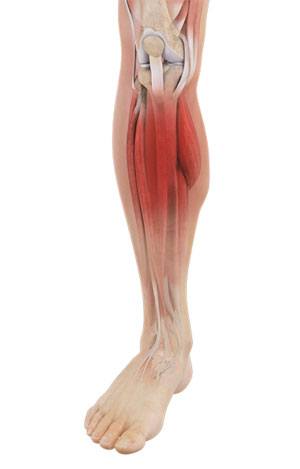
- Shin splints or medial tibial stress syndrome (MTSS) is pain around the tibia or shinbone due to inflammation of the tendons, muscles and bone tissue. It occurs because of vigorous exercises and sports activities.
-
-
Heel Fractures
-
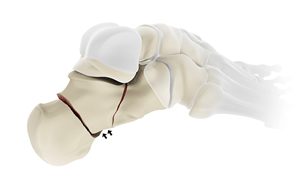
- The calcaneus or heel bone is a large bone found at the rear of the foot. A heel fracture is a break in the heel bone due to trauma or various disease conditions.
-
-
Lisfranc (Midfoot) Fracture
-
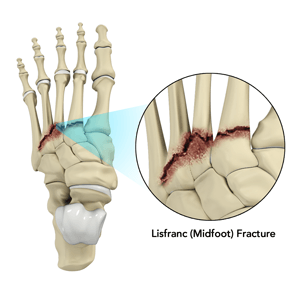
- The Lisfranc joint or tarsometatarsal joint refers to the region in the middle of the foot. It is a junction between the tarsal bones (bones in the foot arch) and metatarsal bones (five long bones in the foot). Lisfranc fractures can occur due to a fall from a height or a traumatic motor vehicle accident.
-
-
Talus Fractures
-
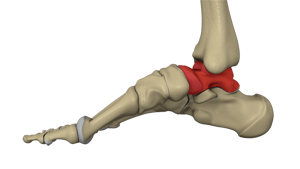
- The talus is a small bone at the ankle joint that connects the heel bone and the shinbones, enabling up and down movement of the foot.
-
-
Heel Cracks
-

- Heel cracks or fissures are the splitting or cracking of the skin on the outer edge of the heel due to excessive drying and pressure that causes the skin to expand sideways. In some people, thick, hard layers of the skin (calluses) can cause flakes and deep cracks. Untreated heel fissures may cause bleeding, infection and foot ulcers.
-
-
Sever's Disease
-
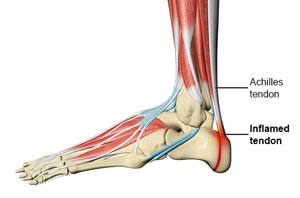
- Sever's disease is a painful inflammation of the growth plate in the heel. Growth plates are areas at the end of children’s bones that undergo changes so bone growth can occur. During this time, the muscles and tendons may not grow as fast as the bone causing tightness and pressure at the back of the heel.
-
-
Mallet Toe
-
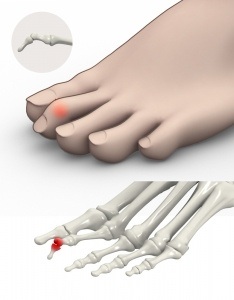
- Mallet toe is a deformity where the toe abnormally bends downward, resembling a hammer or mallet. The bones at the tip of the toe are connected by the distal interphalangeal joint (DIP). Muscle imbalance or damage to the tendons or ligaments of the DIP causes contraction and deformity.
-
-
Fungal Nails
-
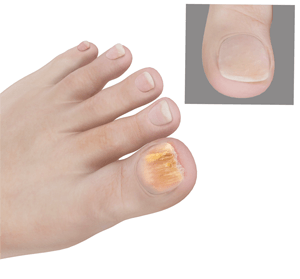
- Fungal infections are common in nails and occur most often in toenails. Termed as onychomycosis, nail fungus affects the keratin, the hard material that makes up the nail and can include the entire nail or a portion of the nail, along with the nail root, plate or bed. It gradually leads to thickening, distortion, and discoloration of the nails.
-
-
Foot Pain
-

- Foot pain occurs from distress induced by certain factors on the foot. It is a common problem experienced by young athletes involved in various activities such as running and jumping. Normally, foot pain can be treated with home treatments and may take time to heal.
-
-
Foot Infections
-
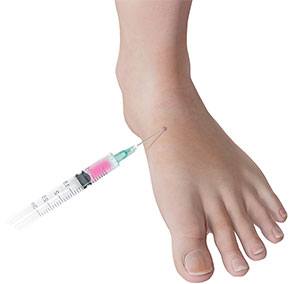
- Foot infections may occur after trauma to the foot or loss of tissue because of contamination from foreign material and/or bacteria or fungus. Infections can occur in healthy individuals as well as in those whose health is compromised.
-
-
Foot Inflammation
-
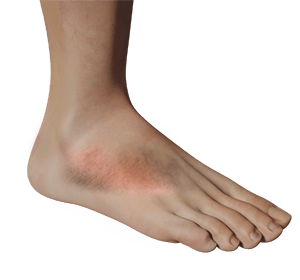
- Foot inflammation is the result of a person’s immune response towards various irritants or injuries to the foot. Based on the type of response, the inflammation can be classified as acute when it occurs suddenly, or chronic, occurring gradually as a result of a long-term disorder.
-
-
Sesamoiditis
-
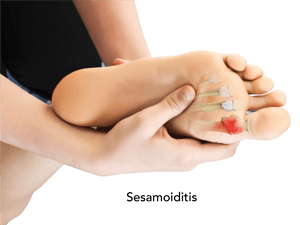
- Sesamoiditis is inflammation of the sesamoid bones and the tendons in the foot. The condition occurs when the tendons attached to and surrounding the sesamoid bones become injured, irritated and inflamed. It is a form of tendinitis (inflammation of the tendon).
-
-
Nerve Conditions of the Foot
-

- The foot is composed of bones, ligaments, nerves, muscles, and tendons. Nerve conditions of the foot can range from minor nerve injuries to serious conditions like nerve entrapment and damage. A podiatrist is a doctor specializing in the treatment of foot problems including nerve conditions.
-
-
Foot Spasms
-
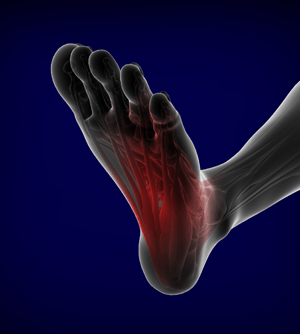
- Foot spasms, also known as foot cramps, occur due to the involuntary contraction of the foot muscles. These cramps are usually harmless and will get better on their own; however, sometimes they may need medical attention. Based on the intensity of the spasm, the sensation can vary from a tiny prick to an extremely painful condition.
-
-
Corns
-
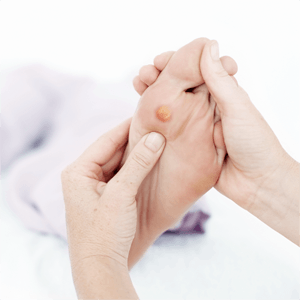
- A corn is a circular area of thickened skin developed because of continuous friction or pressure. They usually develop on the soles of feet or on the top or sides of toes and appear as yellowish dead tissue surrounding an area of tenderness.
-
-
Bunionette (Tailor's Bunion)
-
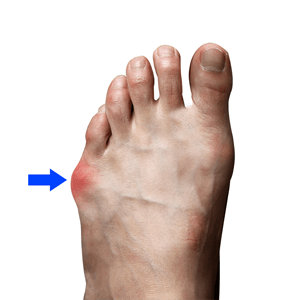
- Bunionette, also called Tailor’s bunion, is a bony lump formed along the outside of the little toe at the base. It occurs when the very bottom bone (fifth metatarsal bone) of the little toe enlarges or shifts outward. Sometimes, it can be a bony spur (an outgrowth of bone) on the side of the fifth metatarsal bone head.
-
-
Foot Lesions
-
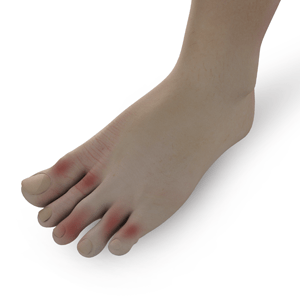
- A foot lesion is an abnormal change in an area of skin on the foot. It may be caused by infection, injury or abnormal growth of tissue. Foot lesions are commonly seen in diabetic patients due to nerve damage and poor circulation.
-
-
Metatarsal & Phalangeal (Forefoot) Fractures
-
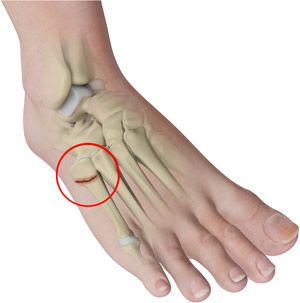
- The forefoot is the anterior or front portion of the foot that functions in weight-bearing and maintaining balance while standing, walking or running. It is formed by 5 metatarsal bones, 14 phalange bones, and various soft tissues.
-
-
Posterior Tibial Tendon Dysfunction
-
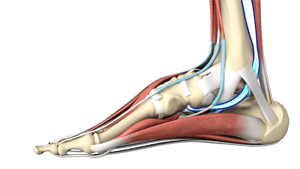
- The posterior tibial tendon passes through the ankle to attach the calf muscle with the bones of the midfoot. It provides stability to the arch and supports the foot while walking. Inflammation or a tear of this tendon as a result of injury may cause dysfunction, leading to pain and the development of a flatfoot.
-
-
Sesamoid Fracture
-

- A sesamoid fracture is a break in the sesamoid bone. Sesamoids are two small, pea-shaped bones located in the ball beneath the big toe joint at the bottom of the foot. Sesamoid bones are connected to muscles and other bones by tendons that envelop these bones. Sesamoids help the big toe move normally and absorb the weight placed on the ball. A podiatrist is a doctor specializing in the treatment of foot problems including sesamoid fractures.
-
-
Stress Fractures of Foot & Ankle
-
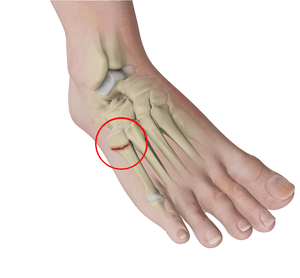
- A stress fracture is described as a small crack in the bone which occurs from an overuse injury of a bone. It commonly develops in the weight-bearing bones of the lower leg and foot.
-
-
Vertical Talus
-
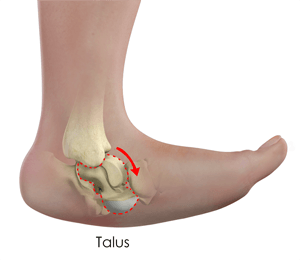
- A vertical talus, also called “congenital vertical talus or CVT”, is a rare foot deformity typically seen at the time of birth. The condition may affect one foot or both feet of your baby.
-
-
Acrocyanosis
-

- Acrocyanosis is a disorder of the peripheral vascular system characterized by a bluish coloration of the skin due to reduced oxygen in the blood. It normally affects the hands and feet.
-
-
Osteochondral Lesions of the Ankle
-
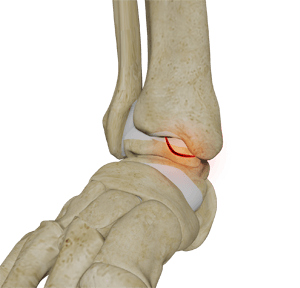
- The tibia and the fibula bones of the lower leg join with the talus bone to form the ankle joint. The talus bone is an important bone located between the tibia and fibula and the heel bone (calcaneus). OCL or OCD is the damage to the cartilage and the talus bone of the ankle joint. Usually, the inner or the medial portion of the ankle is affected.
-
-
Overlapping or Underlapping Toe
-

- An overlapping or underlapping toe is an abnormal condition in which a toe overlaps or underlaps the toe next to it. Although this can happen with any toe, it usually affects the fifth and second toes. The toe may be flexible, allowing it to return to its normal position, or it may be rigid and fixed.
-
-
Stiff Big Toe (Hallux Rigidus)
-
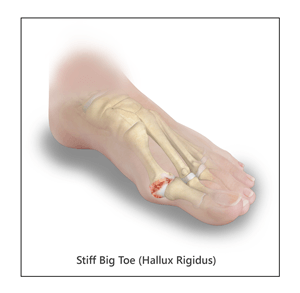
- A stiff big toe, also called hallux rigidus, is a form of degenerative arthritis affecting the joint where the big toe (hallux) attaches to the foot. The toe typically becomes stiff at the base and is sometimes called a “frozen joint”.
-
-
Tarsal Tunnel Syndrome
-
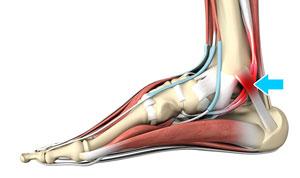
- Tarsal tunnel syndrome, also known as ‘posterior tibial neuralgia’, is the inflammation of the posterior tibial nerve caused by a compression or squeezing pressure on the nerve.
-
powered by Birdeye
